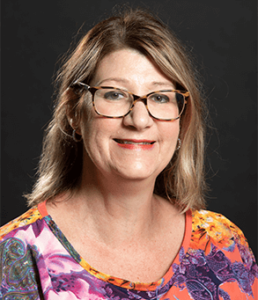If you’ve ever struggled to learn in a traditional classroom setting, you know how hard it can be to complete a simple assignment or even prepare for an exam. At the University of Wisconsin, course materials are created with user experience at the forefront by a team of instructional designers dedicated to working alongside faculty to ensure all students’ needs are met.
The UW Extended Campus Instructional Design Team (ID Team), which services UW Flexible Option and collaborative degree programs, along with course development for UW Independent Learning, knows that students in these courses are a reflection of the world. The team works with faculty to create learning materials and organize course content so that students can learn efficiently and effectively in an online environment. Their goal is to create courses flexible enough to allow students to learn when, where, and how it’s most convenient for them.
When it comes to instructional design, UW Extended Campus’ approach has always been focused on meeting the needs of all students. “People come from all walks of life,” says Ryan Anderson, Senior Director of Instructional Design. “We don’t want to design [content] for one individual, but rather broaden [everyone’s] access to it.”
On July 26, 2023, the US celebrated the 33rd anniversary of the Americans with Disabilities Act (ADA), which paved the way for accessibility standards. For students like Amanda Kauffman, who has hearing loss, the versatility of these online programs can make all the difference.
Amanda, who is slated to graduate this December with a bachelor’s degree from UW-Milwaukee in Biomedical Health Sciences, had previously studied at schools in-person in Milwaukee and Chicago, but wasn’t thriving.
“It was very troublesome for me, being in the classroom setting,” she says. “I would do my accommodations. I would sit up front. I talked to my teachers; did office hours. My grades were constantly affected by it.”
Before UW Flexible Option, she struggled to hear her professors and other students during lectures. “You can take so many notes for so long. But what if you don’t hear something? What if you misinterpret something? And then you don’t understand that lesson plan. But here, there’s videos of lectures. I can go back and just rewatch this lecture and not be like, oh, I misunderstood this or anything like that.”
The online format of her UW Flexible Option program was exactly what she needed to successfully complete her education.
“I really think people who struggle in a classroom setting should really consider a program like this. Like I’ve told my other professors, this was life-changing for me,” Amanda says.
Designing for all can mean something as simple as including closed captioning on videos, providing access to a transcript, or adding captions for images. While closed captioning was originally created to help those with hearing loss, like Amanda, students watching videos without headphones in places like coffee shops or public transportation can benefit.
Some students have documented learning disabilities or hearing/vision loss, but others’ needs are not as recognizable. For example, students with ADHD may choose not to disclose it. Others may struggle with traditional classroom settings due to undiagnosed disabilities; even chronic illness or pain can prevent students from having a positive experience in class.
Learning design must evolve as students’ needs change. One example is colorblindness guidelines. In this case, a student with colorblindness searching for a stop sign will focus on the octagonal shape rather than the bright red color. Therefore, designing courses with visuals focused on more than just color is imperative.
To ensure that accommodations are helpful, instructional designers work with volunteer students to test them out. Laurie Berry, instructional designer, completed some pilot testing for an in-house created media player used in the courses. The player can run lectures with quizzes, resources, and other interactive features for students. She worked with several individuals from the blind community to ensure the media player would successfully work for similar users.
The individuals involved in the pilot test were happy “because they felt like they had a voice,” Laurie says. “We were designing something for an audience of people, with members from the audience.”
Continuing education for the ID Team is also a must as laws and standards change quite regularly. Laurie attended an assistive technology conference that discussed how designers can address the needs of all students versus focusing on just those requiring accommodations. After this experience, she became an advocate for accessibility on the team. “It was a transformative experience,” she says. “Instead of observing, we were experiencing their world exactly how they navigate it.”
“It’s important to note that good practice in designing for those [with accommodation needs] can benefit everyone,” Laurie says.
When designing course modules, the ID Team uses headings, consistent formatting, outlines, labels, and closed captioning for videos to ensure all can comprehend the material. They also provide transcripts and closed captioning.
The information is “chunked” to ensure that each piece is easy to digest. Course material lives on Canvas, the learning management system. By law, the content is required to use color contrast, avoid flashing video or graphics, and disable videos from auto-play.
The effort the ID Team puts in for each course is no easy feat, but it ensures the learning experience is accessible for students, especially ones who might struggle in a traditional classroom setting.
As Amanda says, “I think this program was so helpful for me just because, like I said, everything is there. As long as you’re disciplined and you can space it out and how you need to complete your assignments, there’s no way you can say that you didn’t understand something or that you didn’t have all the information.”

